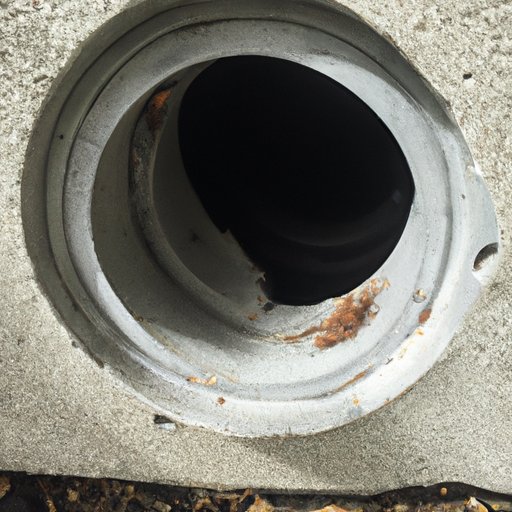Introduction
It’s a homeowner’s nightmare: a snake in their toilet. But how do snakes get in toilets? The answer is complicated, as there are many entry points that snakes can take advantage of. In this article, we explore the different ways a snake can enter your toilet and the preventive measures you should take to ensure it never happens.
Plumbing Vents
One of the most common ways for snakes to enter a toilet is through plumbing vents. Plumbing vents are pipes that allow air to flow into and out of the plumbing system. They usually lead up and out of the roof, but if they’re not properly sealed off, a snake can easily find its way in.
To prevent a snake from entering through the plumbing vent, it’s important to make sure the pipe is sealed off tightly. This can be done by using caulk or metal mesh to fill any gaps around the pipe.
Cracks in Foundation
Another common entry point for snakes is through cracks in the foundation of a home. These cracks can be caused by settling of the soil or weathering of the foundation material. If the crack is large enough, a snake can squeeze through and make its way inside.
To prevent a snake from entering through a crack in the foundation, it’s important to seal off any cracks or gaps. This can be done with a concrete patch or other suitable sealant. It’s also important to inspect the foundation regularly for any new cracks or damage.
Toilet Flanges
Toilet flanges are the metal rings that connect the toilet to the floor. If the flange is not securely fastened, a snake can squeeze through the gap and make its way into the toilet.
To prevent a snake from entering through the toilet flange, it’s important to make sure the flange is tightly secured. This can be done by using screws or bolts to firmly attach the flange to the floor. Additionally, it’s important to inspect the flange regularly for any damage or loose connections.
Open Windows
Open windows are another potential entry point for snakes. If a window is open, a snake can easily climb in through the opening. This is especially true for ground-level windows, which are closer to the ground and more accessible to snakes.
To prevent a snake from entering through an open window, it’s important to keep windows closed and locked whenever possible. Additionally, it’s important to inspect windows regularly for any signs of damage or weak locks.
Drain Pipes
Snakes can also enter a home through drain pipes. If the pipes are not properly sealed, a snake can squeeze through the gap and make its way inside. This is especially true for pipes that are connected to the outside of the house, as they are more exposed to the elements and more likely to have gaps or cracks.
To prevent a snake from entering through a drain pipe, it’s important to make sure the pipe is sealed off tightly. This can be done by using caulk or metal mesh to fill any gaps around the pipe. Additionally, it’s important to inspect the pipe regularly for any signs of damage or wear.
Sewer Lines
Sewer lines are another potential entry point for snakes. If the lines are not properly sealed, a snake can squeeze through the gap and make its way inside. This is especially true for sewer lines that are connected to the outside of the house, as they are more exposed to the elements and more likely to have gaps or cracks.
To prevent a snake from entering through a sewer line, it’s important to make sure the line is sealed off tightly. This can be done by using caulk or metal mesh to fill any gaps around the line. Additionally, it’s important to inspect the line regularly for any signs of damage or wear.
Holes in Walls or Floors
Snakes can also enter a home through holes in walls or floors. These holes can be caused by rodents or insects, or they can be created when installing pipes or wiring. If the hole is large enough, a snake can easily make its way inside.
To prevent a snake from entering through a hole in the wall or floor, it’s important to seal off any holes or gaps. This can be done with a concrete patch or other suitable sealant. It’s also important to inspect the walls and floors regularly for any new holes or damage.
Conclusion
In conclusion, there are several ways for snakes to enter a toilet. From plumbing vents and cracks in the foundation to toilet flanges and open windows, it’s important to understand the various entry points and take preventive measures to ensure your home is safe and secure. By sealing off any potential entry points and inspecting them regularly, you can rest assured that no snakes will make their way into your toilet.
(Note: Is this article not meeting your expectations? Do you have knowledge or insights to share? Unlock new opportunities and expand your reach by joining our authors team. Click Registration to join us and share your expertise with our readers.)
